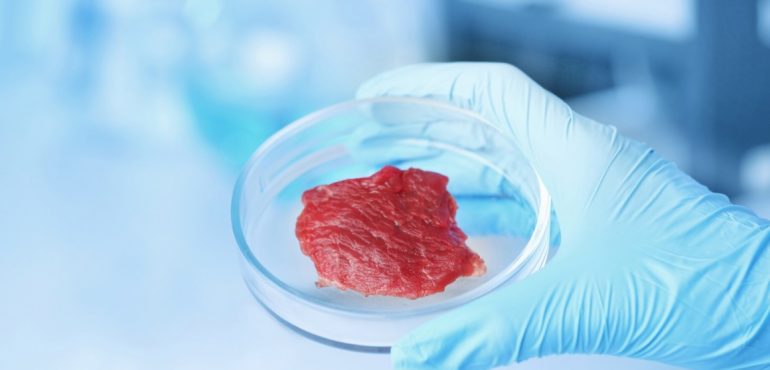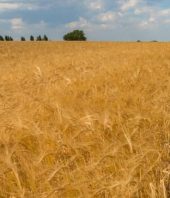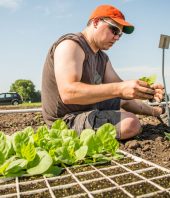A team of Harvard bioengineers took a major step in taking cultured meat from lab to table.
Researchers successfully grew cow and rabbit meat from an edible gelatin base for the first time, creating a substance that successfully mimicked the texture of natural meat, according to a new study published in the npj Science of Food journal.
Engineers have tinkered with bioengineered meat for years, taking stem cells from animals and growing and multiplying them until they divide and form new muscle tissues.
But previous attempts to grow environmentally friendly meat found it difficult to recreate the long, stringy muscle fibers that make up meat.
For their research, the Harvard team borrowed from a carnival food favorite and spun edible fibers made of gelatin using rotary jet spinning, a process similar to how cotton candy is made. The fibers resemble natural tissue's "extracellular matrix"--the "glue" that binds tissue.
The rabbit and cow cells anchored to the gelatinous bases and grew similarly to real meat in long and thin strips. Compared to the tissue of natural rabbit muscle, the protein of the bioengineered meat looked pretty similar, though its tissue distribution more closely resembled that of processed meats like ground beef than unprepared meat, the study said.
How close are we to eating lab-grown meat?
There are still hurdles in getting the meat onto supermarket shelves. Engineers are still perfecting growing the meat in large quantities and creating products that mimic the natural taste and texture of meat.
The process is the antithesis of the fast-food model--one burger patty can take up to nine weeks to grow. And even though it uses the same technology it takes to repair organs, more than 80% of people in a Pew survey said they wouldn't eat meat grown in a lab.
But it's a vastly greener method of meat production and consumption that could mean fewer animals will be raised and slaughtered in the future.
Agriculture, forestry and human land use, which include meat production, accounted for up to 44% of methane emissions between 2007 and 2016, according to a 2019 United Nations report. Raising fewer animals for slaughter could make for a lighter carbon footprint.
"Moving forward, the goals are nutritional content, taste, texture and affordable pricing. The long-range goal is reducing the environmental footprint of food," said Kit Parker, senior study author and Harvard professor of bioengineering and applied physics, in a statement.
Source: CNN, Full Article






